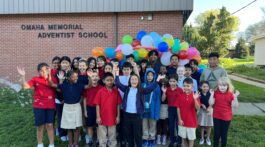Normally, I spend my days driving to different nursing facilities and homes, visiting patients and/or their families. I carry a caseload of 35-40 patients, 100 percent of whom are dying. Their families are grieving and trying to figure out how to care for their parent, spouse or child who may have months or days to live. The patient may know they are dying, but most don’t even realize they are sick, as most have some level of cognitive decline.
Some do not recognize their family. This makes the grieving process hard for families. They sometimes spend months in a steady state of anticipatory grief, and it is my job to sit with the family as they walk through that. Often, the best we can do is help them to not suffer and grieve alone.
The same is true for patients. It may be about listening to them as they ask questions like, “I’m 97. Why won’t God let me die?” But most often, I’m another face who came to visit, and in their minds in that moment, I’m the only person who came to visit them, because they can’t remember that their family comes every day. They believe they’ve been abandoned and no one loves them enough to visit.
My greatest tools aren’t my words, but instead my hands that hold theirs, my arms that give hugs, and my warm body that sits in the room with them when they are no longer able to form words.
And then COVID-19 took away most of my tools. Zoom and other tele-health platforms can be used, but most of my patients don’t remember how phones work, and they wonder who that weird voice is talking to them through the plastic thing in their hand.
Families can’t see their loved ones anymore. But therein lies something important. Before, I was sitting with people in their experience, but now I am talking with people as I share their experience. And that subtle difference is infinitely important. I sit in my house, just like the families. I give them a phone call, because I can’t leave my house to see people. And we talk about what it’s like to be isolated from the people we care about and love.
The difference is, when this is done I’ll get to see my people again. But for many families, the next time they will be allowed to see their loved one is when that person dies. This has opened up a new and more efficient avenue for helping families process their loss.
Before, I would have to work hard to get some families to engage the reality of fatigue and loss. But now, it’s hitting them immediately. When I call them, they start talking about being isolated and stuck at home, then they speak of how hard it is to know their loved one is alone. But then the truth comes out. The loved one with the cognitive decline hasn’t noticed a difference during quarantine, but the family has.
Now, the family recognizes what that loved one must feel like all the time. Now the family fears they will never see their loved one again this side of death. And now they have no ability to hide from the reality.
As a result, my work is strangely more intimate. We start from a shared perspective. I get to be present with them in a new way. There is less physical presence, but there is shared emotional presence. The reality they have denied for so long becomes real, and we confront it together. We step into it and walk through it. And whether we pray together for strength or I listen as they rage against an unfair God, we keep moving forward in spite of fear, loss and regret.
We move forward together, sharing in each other’s wisdom, companionable in the shared reality, all while seated on our comfy couches wrapped in our soft pajamas.
Tony Hunter is a Seventh-day Adventist pastor and hospice chaplain working for Elevation Hospice in Northern Colorado.










